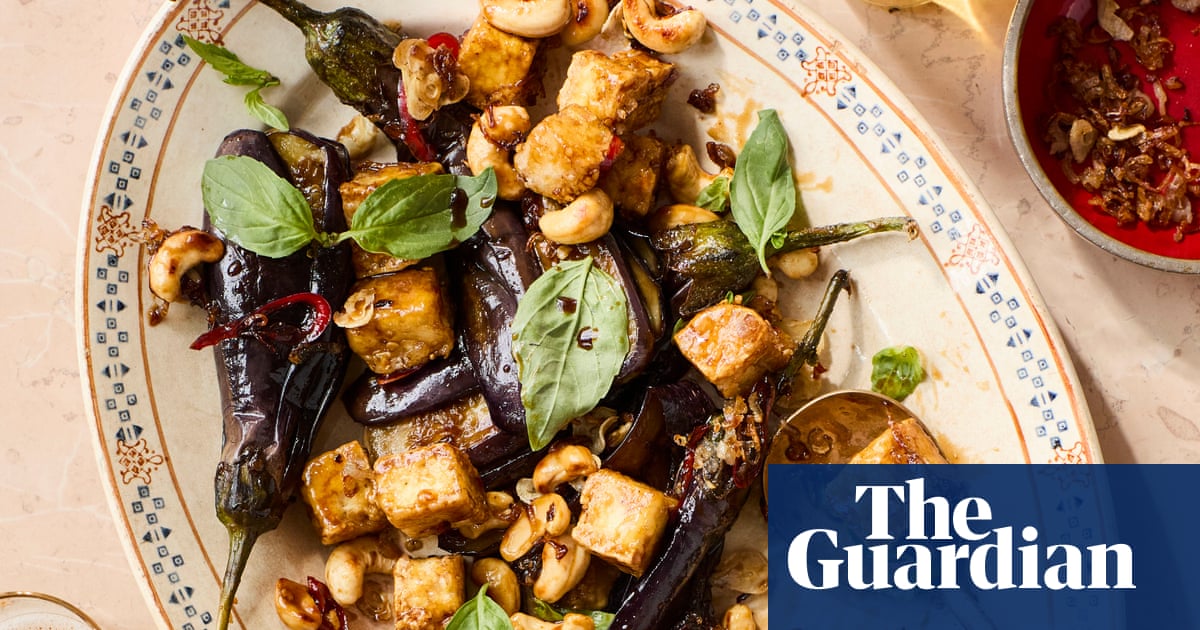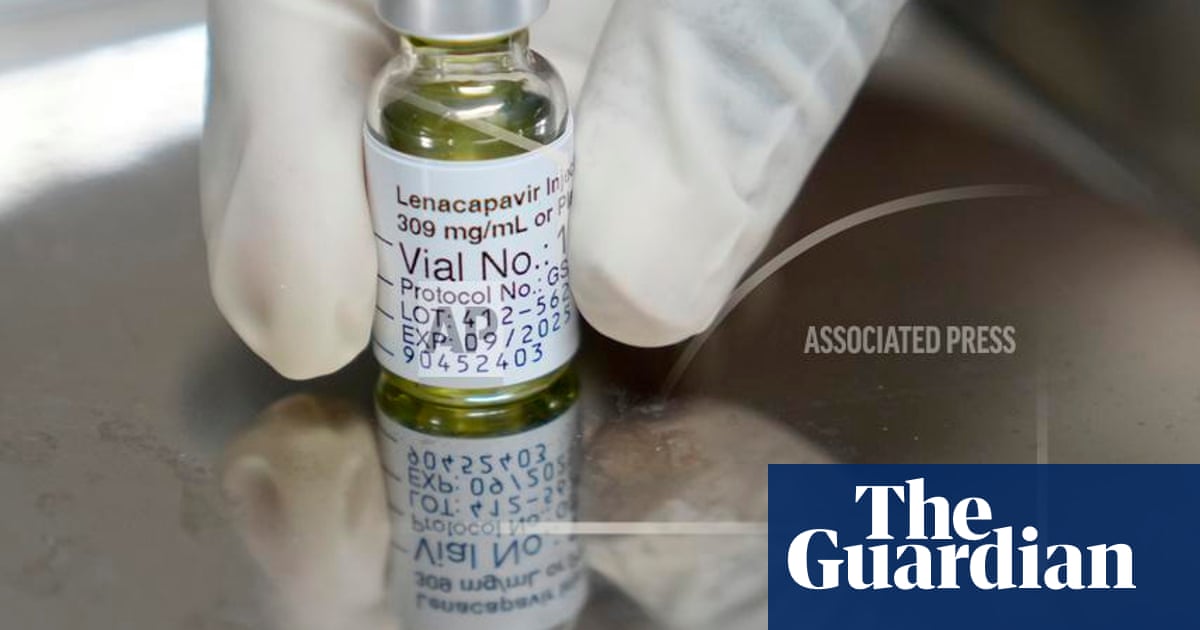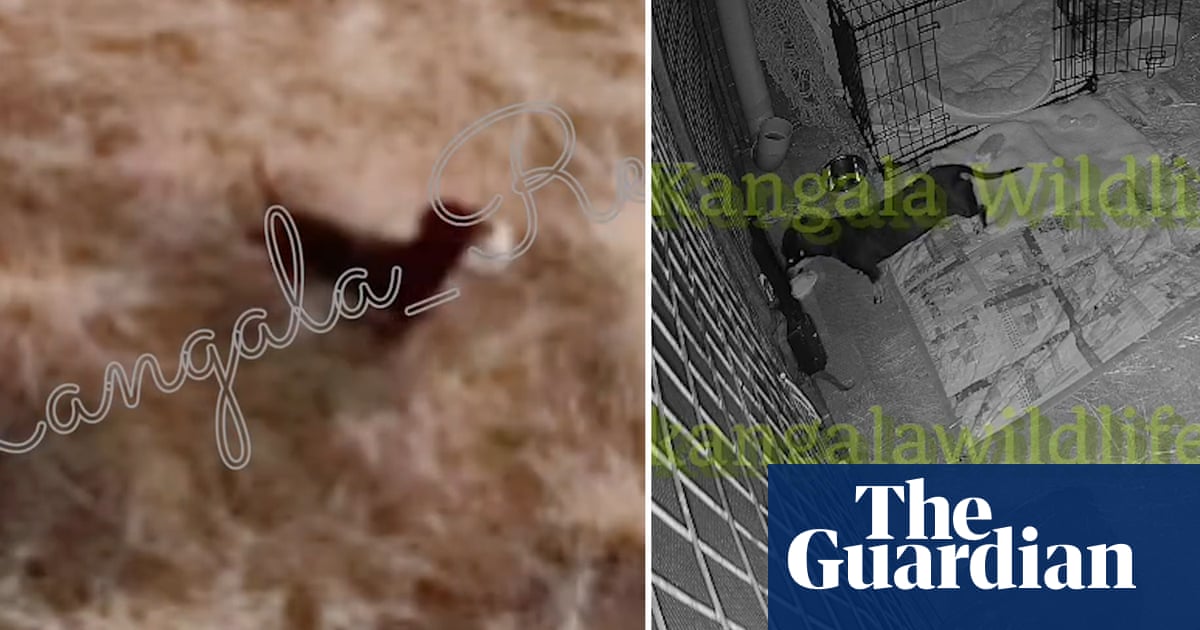Insects are in trouble. Around the world, scientists are reporting catastrophic declines in their numbers, even in nature reserves that are largely protected from human touch. We are also beginning to see huge drops in the populations of other animals – such as birds – that depend on insects as food.
Many of the drivers of those declines are structural, and require strong action by governments to turn around. But there are clear, easy steps that anyone can take to support the insect world. For species under such pressure, any respite is important, and we can create refuges for insects in a world increasingly hostile to their survival. In creating better habitats for insects, you can also reap the benefits: thriving gardens, more songbirds, and a healthier web of life.
Here are 25 small, achievable, science-backed actions you can take today – at home, in the garden, or out in the city.
Turn out the lights
Everyone has seen moths circle a bulb at night. But if that light stays on, researchers estimate one-third of insects trapped in its orbit will die before morning. Light pollution is a huge driver of insect declines: it changes insect behaviour and can even make leaves too tough for them to eat. It is also a relatively easy one to solve, says Brett Seymoure, a behavioural ecologist at Washington University in St Louis. “Once you turn off a light, it is gone. You don’t have to go and clean up, like you do with most pollutants. I am not saying we need to get rid of light at night, I think we just need to use it wisely.” You can help by switching off your outdoor lights or putting them on a sensor, and shading windows so they’re not shining out into the night. You can also ask your local council to consider switching off some street lights for at least part of the night, particularly in parks and nature reserves – a move that studies have shown benefits insects and saves councils money.
Plant native
One of the best things you can do for insects is cultivate native plants, says Prof Douglas Tallamy, an entomologist at the University of Delaware. Local insects have evolved alongside local plants, and adapted to specific bloom shapes or leaf textures – many bees, for example, will only visit a single type of flower, even if others are growing nearby. Imported ornamental species and foreign plants often don’t work as food or shelter for local species – by installing native plants, you can help insects get the food they need.
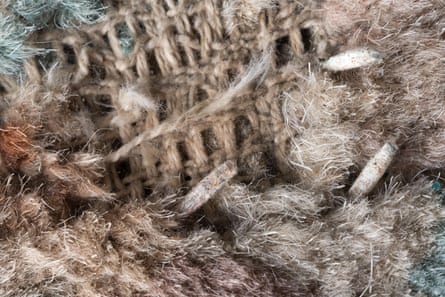
Swap moth bombs for wasps
Clothing moths are a huge pest in many households, chewing through winter coats, jumpers and wool carpets. But insecticides such as moth bombs can kill off every other insect in the vicinity. Now, some experts – including museums, which can’t expose their artworks to chemicals – are experimenting with a natural ally: tiny parasitic wasps. The wasps are minuscule, barely visible to the naked eye, and lay eggs in moth larvae. Once the moths are gone, the wasps go too. The tiny wardrobe allies have been trialled by the National Trust, and used for pest control on cassava crops. You can order sachets of the wasps online.
Start composting
Even on the coldest winter days, compost heaps provide warm, safe habitat for insects to thrive. Over time, compost also improves soil structure and fertility, providing food and habitat for other garden insects. If you don’t have a compost heap of your own, many organisations run neighbourhood composting schemes.
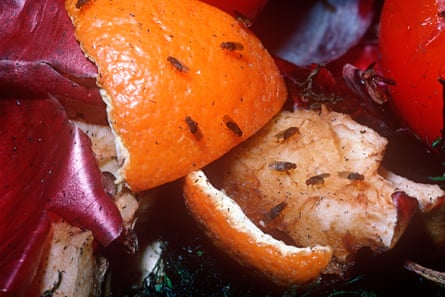
Provide water
As the climate heats, droughts are ramping up – and insects are struggling to survive the dry conditions. Providing sources of water with a basin, puddle, pond or bowl can help. Keep in mind that bees can’t swim, so deeper water sources will need either a clear rim to drink from, or “islands”: according to University of California, floating corks or piles of rocks can work. Research has also shown that bees get important nutrients from “dirty” water, where leaves or algae are breaking down, so don’t keep your bee pools pristine.
Leave the leaves
When trees shed their greenery, resist the urge to rake them up: leaf litter is a crucial habitat. Researchers have found that raking up leaves reduces moth and butterfly numbers by 45%, beetles 24%, and spiders up to 67%. Save yourself the trouble, and let the leaves lie.
Install a window box or balcony garden
Creating food for insects can happen on any scale: a sprawling meadow, tiny balcony, or even single window box. If you have a balcony, you can create a pollinator garden entirely in pots. If you don’t have any outdoor space at all, even window pots or boxes with flowering native plants can provide a valuable pitstop for pollinators flying through.
Use antibiotics and other medications carefully
Most people aren’t aware of the link between medical prescriptions and insect life. But overuse of antibiotics and other medications was ranked in the top five emerging threats to pollinators. The clearest links to damage are from agricultural antibiotics, sprayed on fields. But human medications – huge amounts of which enter ecosystems through waterways – are also affecting many species, and are of growing concern for ecologists. No one should stop taking necessary medications, but you should use them only as directed, and dispose of them properly when out of date – don’t just flush them down the toilet.
Build a butterfly bank
Some butterflies rely on just a few plant species for food and reproduction. They also need variations in habitat, particularly scrubby areas with sparse, longer vegetation, shade from intense heat, and shelter. That’s where butterfly banks come in. By creating a raised area of habitat that provides shade and natural variations in temperature throughout the day, butterflies have areas of refuge from unpredictable weather extremes. Many nature reserves and some farms are using them to help butterflies survive global heating. Recent trials have built the banks in an “E” shape – if you have access to a larger garden or piece of land, you can do the same.
Avoid toxic de-flea potions
While many harmful insecticides have been banned in food production, some remain legal for treating fleas in dogs and cats. A growing number of studies show that they are a disaster for wildlife, often leaching into waterways from fur. One monthly flea treatment for a large dog contains enough imidacloprid to kill 25 million bees, according to recent research. Avoid them altogether, or if you absolutely must de-flea, don’t let your dog swim for at least a month after treatment.
Follow the 3 x 3 x 3 system
If you’re planting for pollinators, knowing where to start can feel overwhelming. Many nature-loving gardeners advocate for the 3 x 3 x 3 method: pick three native plant species that flower in each growing season – spring, summer and autumn – and plant them each roughly in their own area. This way, you provide insects with food and habitat throughout the year. Here is a beginners’ guide to getting started.
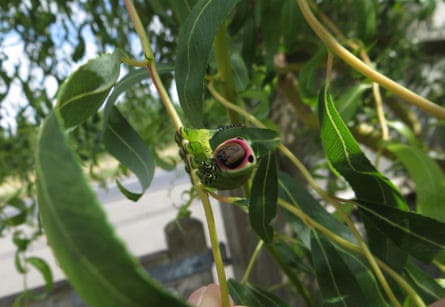
Choose keystone plants
While native plants in general will help, a smaller subset are absolutely critical for insects – particularly caterpillars – and the birds that feed on them. “Just 14% of our native plants are supporting 90% of the caterpillar species in North America – we call them keystone plants,” Tallamy says – and the same applies to many other countries. After he rehabilitated his own plot of land with keystone species, Tallamy says, he watched the numbers of insects and birds shoot up. For the US, those keystone plant species are listed by region by the National Wildlife Federation. The UK also has lists of local keystone plants: native varieties of cherry, birch, and oak, for example, support 400 species of caterpillar each. In other regions, try searching for insect keystone species for your area.
Sprinkle some rocks
Of the world’s more than 20,000 bee species, between 64% and 83% nest in the ground. Researchers from Australia conducted an experiment to find how native bees responded to different nest materials, and found that sprinkling rocks and gravel over the soil resulted in the greatest increase of nests. Different bee species need different environments to survive – you can speak to local bee conservation groups about specific ways to make gardens around you more nest-friendly for local and endangered species.
Eat organic
There is very clear evidence that collapsing insect populations are driven by the rollout of intensive agriculture and pesticide use. If you can afford it, buying organic foods, which are produced without the use of synthetic pesticides, can help give space for insects to recover.
Choose polyester-free clothing
“Tiny plastic particles are everywhere and can reduce pollinator health and lifespan,” a new report on threats to global pollinators has found – ranking microplastics as the second most significant emerging threat to insects. All polyester, nylon, spandex and acrylic fabrics are plastic, and they shed millions of fragments as they’re washed and worn – a single load of polyester-containing laundry can shed 700,000 microplastic fibres. Natural fibres, such as wool, silk and linen don’t shed any (cotton also does not shed microplastics, but is responsible for about 4% to 10% of the world’s pesticide and insecticide use – you could opt for organic cotton, which does not use synthetic pesticides).
Cut your plastics
Likewise, reducing all of your plastic use – bags, packaging, bottles, toys – will help cut the microplastics you release into the world.
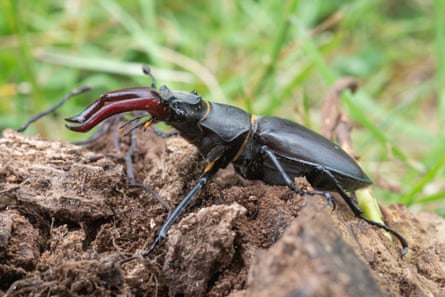
Let things rot
Death and disintegration are part of the life cycle of ecosystems, providing vital food and homes for insects, and adding nutrients to the soil. Dead trees, fallen branches and logs – even small dead mammals – all provide important food for invertebrates. By clearing them away, we eliminate habitats and nutrients. If you can safely do so, let things rot.
Weed by hand
Herbicides and pesticides are one of the most significant threats to insect life. Glyphosate, one of the world’s most common herbicides, has significant effects on insects, damaging their immune systems. Avoid blasting unwanted plants with chemicals and weed by hand instead – there is also research to indicate that spending time gardening is linked to better physical and psychological health.
Create shade
Insects are particularly sensitive to changes in temperature, which act as a trigger for stages of their lifecycle. But as global heating disrupts previously predictable weather patterns, these processes are increasingly out of sync. Creating cooler areas of shade – particularly when temperatures are abnormally high – provides shelter and respite for insects.
Skip the lawn – or mow it less
No mow May is one of the most successful recent environmental campaigns in the UK, intended to provide more habitat to bees, butterflies and other invertebrates during a key part of their lifecycle when they are emerging from a cold, hard winter. But it doesn’t have to be only May. Letting grasses grow uninterrupted, particularly where native wildflowers thrive, can be a big boost for insects.
Sprinkle wildflowers
Sometimes, all a vacant plot, neglected berm or empty lot needs to boost its biodiversity value is seeds. Researchers from Poland recently found that patches of wildflowers in cities can be just as good for insects as natural meadows. By protecting and growing those patches, “we can alleviate the hostile environment of urban space for wildlife”, the researchers wrote. A number of NGOs distribute free native wildflower seed packs. You can even buy (or construct) your own sprinkling system: put a mix of seeds in a spice shaker, and carry it to sow flowering species in neglected spots of green.
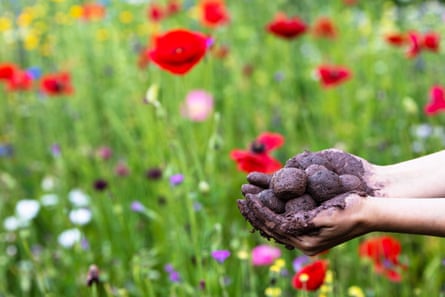
Help count
Research on insects has been troubled by a lack of good population data. To fill the gap, some researchers are turning to surveys by citizen scientists or local communities: one of the most influential, robust pieces of research on insect declines was a study that used data from amateur entomologists across Germany, and found insects in nature reserves had dropped 82%. You can volunteer for one of the butterfly counts now run across the UK, US, Europe, and many other parts of the world. Often, that involves just 15 minutes of counting butterflies in a nearby location. The UK also has the Buglife “splatometer” survey, measuring how many bugs are squashed on vehicle number plates over time.
Spot invasive species
Invasive species can be catastrophic for biodiversity. A single colony of Asian hornets, for example, can “butcher” 90,000 UK pollinating insects in just one season. You can help control invasive species that haven’t yet established breeding populations by learning what to look for, and reporting sightings to the relevant government department. The UK, for example, runs an Asian hornet-spotting app, and most US states have their own process for reporting an invasive species to their wildlife departments.
Protect owls and bats
While often hidden from sight, bats and some owl species feast on insects through the spring, summer and early autumn, and play a key role in regulating their populations. Where owls and bats disappear, farmers tend to increase their insecticides: a study last year found that when the local bat population died, farmers dramatically increased chemical pesticide use. By supporting your local bat and owl populations, you can have positive knock-on effects for insects.
“We’re at a new point in human history,” entomologist David Wagner says, where the heating planet has become the biggest threat to insect life across the world. Up until the last decade, “the major drivers of biodiversity losses around the planet were really land degradation and land loss, habitat loss. But I think now, that climate change is by far exceeding that,” Wagner says. Stopping the worst of global heating – and saving trillions of insects – requires us to dramatically cut our use of fossil fuels.
Find more age of extinction coverage here, and follow the biodiversity reporters Phoebe Weston and Patrick Greenfield in the Guardian app for more nature coverage

 6 hours ago
3
6 hours ago
3


